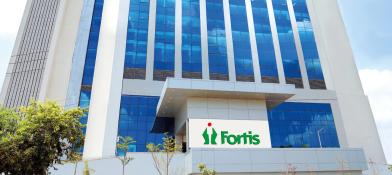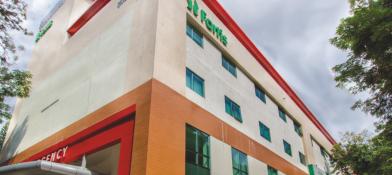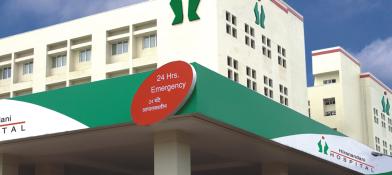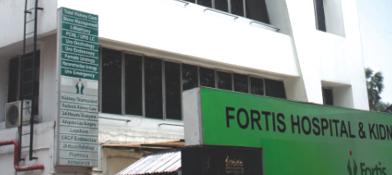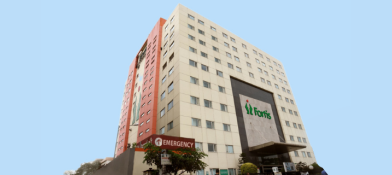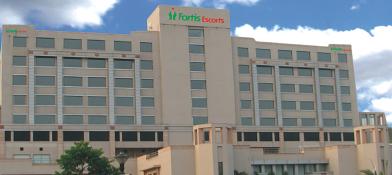Virtual Colonoscopy
What is Virtual Colonoscopy
A virtual colonoscopy is a procedure that involves the use of an X-ray to find polyps ulcers and cancers inside the colon and the rectum of the person. The procedure is called computerized tomography (CT) colonography. A skilled and trained technician conducts the virtual colonoscopy and documents all the images. A radiologist checks the images and tries to see if there are any polyps, ulcers, or cancer present.
Who Needs A Virtual Colonoscopy?
Doctors recommend a virtual colonoscopy to screen for colorectal cancer if the person is over the age of 45 years. If however a person is at a higher risk of cancer they may require screening at an earlier stage.
The risk factors for colorectal cancer include
- If the person has a family history of colorectal cancer.
- The presence of certain genetic conditions that lead to polyps in the colon and colon cancer like familial adenomatous polyposis (FAP) or Lynch syndrome.
- Bowel conditions like ulcerative colitis and Crohn’s disease increase the risk.
- The doctor may suggest a virtual colonoscopy if a person is not keen on doing the regular colonoscopy and they don’t want to be put to sleep during the procedure.
- They may also be suggested a virtual procedure if they have a bowel blockage and if they have a risk of developing side effects such as bleeding if their blood doesn’t clot very fast.
When Is Virtual Colonoscopy Not Recommended
The person is not advised to undergo the procedure for the following reasons:
- If they have a history of colon cancer.
- If the person has polyps in the colon.
- If they have an excruciating bowel condition called Crohn’s disease or ulcerative colitis.
- If there is acute diverticulitis.
How Is The Virtual Colonoscopy Different From Regular Colonoscopy
- The doctor is able to remove polyps from the colon during a regular colonoscopy, not during a virtual colonoscopy. If polyps are sighted during a virtual colonoscopy, the person requires a traditional colonoscopy to remove it.
- The traditional colonoscopy requires the person to receive anesthesia during the procedure so that the person is relaxed and asleep. Virtual colonoscopy requires no sedation and the person can go back to their routine after the procedure.
- The regular colonoscopy’s duration is around 90 minutes or longer if the doctor plans to remove polyps. A virtual colonoscopy takes only around 15 minutes.
- The traditional colonoscopy involves the use of a camera attached to a long tube to see inside the colon. The virtual procedure includes using pictures generated through a CT scan.
What Are The Procedure Details
- A bowel prep is required before the virtual colonoscopy. The prep includes the emptying of the colon of all the stools present to enable the doctor to get a better view of the colon and rectum. The prep is done a day before the procedure.
It includes
- Enema that is put into the rectum to initiate bowel movement.
- Laxatives which are liquids or powders that cause rapid bowel movements.
- A clear diet that is given to the person a day before the colonoscopy. This includes only water, broth that is fat-free, apple juice, and tea or coffee.
- The person cannot eat or drink anything before the fast.
- They are required to consume a contrast liquid to highlight the colon adequately during the procedure.
- The prep leads to frequent diarrhea but is necessary for a successful colonoscopy.
- The person is required to inform the doctor about their health condition, pregnancy, medications, and allergies before the procedure.
- During the procedure, the person is needed to wear loose-fitted clothes and remove any pieces of jewelry or metal from their body.
- The person is asked to lie on a table after changing into a gown.
- A short tube of around two inches is put inside the rectum which pushes air inside the colon to inflate it. This makes it easier for the technician to see the colon.
- The table is slid into a donut-shaped machine which is the CT scanner and has a short tunnel. The scanner takes pictures and makes a buzzing sound while it does so.
- The person is required to lie still while the images are being clicked. They however can speak to the technician at all times during the procedure with the help of an intercom system. The technician may require the person to hold their breath for a couple of seconds or change their positions for clearer images.
- After the procedure, the table is pulled out of the machine and the tube is removed from the rectum.
- The person can get dressed, return to their normal activities, and resume a normal diet.
- They may experience gas, bloating, and cramping due to the air that was pumped inside during the procedure.
- If the doctor notices a polyp or any abnormal growth during the virtual colonoscopy they may advise a regular colonoscopy to remove the polyp. Sometimes the doctor may go ahead with the regular colonoscopy to remove the polyp since the person has already gone through a bowel prep.
- It should however be noted that every polyp may not be cancerous and the person may not be suffering from colorectal cancer.
- If the colonoscopy is normal the doctor schedules the next screening. If the person is at a low risk the next screening may be after five years.
- The doctor should be called if the person is experiencing severe abdominal pain, is having blood in the stools or from the rectum, and has fever and dizziness.
What Are The Benefits Of Virtual Colonoscopy
The benefits of the procedure include:
- The test produces clear and detailed 2D and 3D pictures that enable the doctor to detect any abnormality as compared to the regular colonoscopy.
- The person can resume their daily activities immediately after the procedure since there is no sedation.
- The procedure is less invasive.
- There is a lesser risk of injury during the test.
- The procedure helps generate images of the entire bowel to detect other complications like bowel obstruction etc.
The Risks Involved in the Procedure
- The virtual colonoscopy includes the use of X-rays that emit radiation which can increase the risk of cancer.
- There are chances of a tear in the bowel called bowel perforation during the procedure as it involves inflating with air.
- The contrast liquid may not be safe for certain people with specific medical conditions.
- Pregnant women should not to undergo the procedure.
Conclusion
The virtual colonoscopy may pose certain significant risks but the benefits surely outweigh them. The procedure is a safe and quick way to detect any abnormalities within the colon and rectum and helps the doctor diagnose colorectal cancer, polyps, or ulcers.






